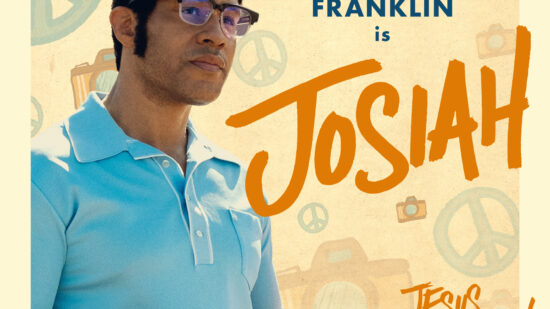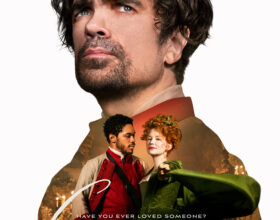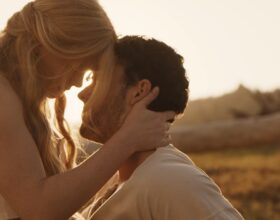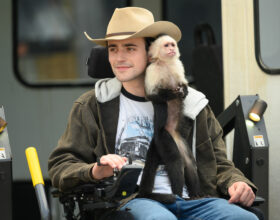by Edwin L. Carpenter – Associate Editor, The Dove Foundation
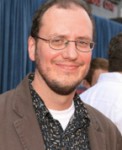 “I had two dreams when I was growing up,” says the director of Disney’s ‘Meet the Robinsons.’ “I wanted to work in animation at Disney and I wanted to direct a Disney film. I have been fortunate to realize both of those dreams.”
“I had two dreams when I was growing up,” says the director of Disney’s ‘Meet the Robinsons.’ “I wanted to work in animation at Disney and I wanted to direct a Disney film. I have been fortunate to realize both of those dreams.”
Indeed he has. Stephen J. Anderson’s new animated feature is a wholesome, imaginative film which happens to hit close to home. “I saw the original script in December 2002,” he told The Dove Foundation. “I was asked to look at it for developing and directing. I didn’t have to get too far past page one before I said, ‘absolutely yes’ to doing that. The main character in the script, Lewis, is looking to be adopted, and is asking questions about his past and why his birth mother had given him up. I was adopted as an infant. I wasn’t in an orphanage and it was different circumstances than Lewis, but those questions he was asking in the script were exactly the questions I had asked when I was a kid about my own past.”
“So I immediately connected with this boy and to this story. I handcuffed myself to the script and said, ‘I’m going to tell this story one way or another.’ I’ve had a passion for it ever since.”
Interestingly, Anderson does three voices in the film, supplying the voice for the Bowler Hat Guy, Tallulah, and Grandpa Bud. He previously had done voiceover work in “The Emperor’s New Groove”.
“I had done a few lines (“The Emperor’s New Groove”), nothing too expressive. When we make movies, early on when we storyboard them we do temp voices before we actually cast our actors. The people that do the temp voices are our selves, our crew members. And sometimes from this early process those voices end up kind of sticking to those characters and supplying personalities, so that’s kind of what happened with me on this movie with the voices I do, and a few of our other crew members do voices as well in the movie. I have an amateur voiceover background!” he chuckled.
Anderson said he had fun doing the voiceover work as he would go down to the recording room for twenty minutes, and “it’s an interesting contrast between the directing, which is very collaborative, and much more of a social thing as you’re always interacting with people, and then you go down to the mike at the booth to do voices and it’s solitary, so it’s kind of an interesting contrast.”
 The voiceover cast includes Angela Bassett, Tom Selleck, Adam West and Daniel Hansen. We asked Anderson how the voiceover cast came together, and he replied, “We looked through a lot of samples. Our casting department pulled sound clips from different actors, from movies and TV shows. We listened to just the audio and we closed our eyes or we’d hold up the drawing of the character and we imagined that voice coming out of the character. Most of the time, when you hear the right voice, it’s automatic—people like Angela Bassett, she had the emotion and the heart, the warmth, for that character. Other times I look for people who are really good at improvisation, people like Harland Williams who plays Carl the Robot. He’s brilliant at improvisation.” His ad-libs worked well according to Anderson.
The voiceover cast includes Angela Bassett, Tom Selleck, Adam West and Daniel Hansen. We asked Anderson how the voiceover cast came together, and he replied, “We looked through a lot of samples. Our casting department pulled sound clips from different actors, from movies and TV shows. We listened to just the audio and we closed our eyes or we’d hold up the drawing of the character and we imagined that voice coming out of the character. Most of the time, when you hear the right voice, it’s automatic—people like Angela Bassett, she had the emotion and the heart, the warmth, for that character. Other times I look for people who are really good at improvisation, people like Harland Williams who plays Carl the Robot. He’s brilliant at improvisation.” His ad-libs worked well according to Anderson.
Anderson spoke for a few moments about Adam West, “Batman” from the old 60’s TV series, who has a small role in the film as Uncle Art. “He’s such an icon for all of us,” said Anderson. “When we thought about casting the character he was the first person we thought of. He has such a distinctive voice. As a personality he acts with his voice and for a generation of us he acts with imagination and he’s got that voice and he’s really good.”
When we asked about challenges in getting the film made, Anderson said, “We knew that the way we portrayed the characters on screen was very important. We tried to make them believable with real emotions. We tried to give them texture and I’m very proud of how they turned out.” He went on to say the balance of keeping them real but making them a caricature was the challenge that he believes they pulled off. He has faith that the audience will believe in the characters.
In addition to working hard on the characters, Anderson and his crew trimmed the fat and left out some scenes which were good in many cases, but stopped the flow of the story. “We came up with new ideas and in some cases the scenes were cut to make the movie better,” he said. Anderson said he had just wrapped up working on some deleted scenes for the DVD release. “There will be quite a bit of material on there,” he said. “There were some really great moments, and a lot of fun things to look back on, and I think the origin of those moments will really be entertaining.”
 Dove asked Anderson what his favorite scene was in the film. “I think my favorite moment in the movie is when we go to the future for the first time. I was so proud of the future cities we were able to create. I love the design of it, the curves and kind of child-like shapes that the buildings take on, and the bubble travel—the look of the future. It’s been my favorite cue of Danny Elfman’s score—and the advertisements—you feel like those bubbles are floating right around your head! You feel like you could reach right out and touch the buildings. That moment I’m really proud of. To create a future that could be—that’s very Disney to me. It’s got Disney kind of characters and is driven by technological designs.”
Dove asked Anderson what his favorite scene was in the film. “I think my favorite moment in the movie is when we go to the future for the first time. I was so proud of the future cities we were able to create. I love the design of it, the curves and kind of child-like shapes that the buildings take on, and the bubble travel—the look of the future. It’s been my favorite cue of Danny Elfman’s score—and the advertisements—you feel like those bubbles are floating right around your head! You feel like you could reach right out and touch the buildings. That moment I’m really proud of. To create a future that could be—that’s very Disney to me. It’s got Disney kind of characters and is driven by technological designs.”
The Dove staff had just reviewed the mono (2-D) version of the film before my interview with Mr. Anderson, and he says the 3-D version is something he is proud of and it drives home the emotions of the film. “It’s unbelievable,” he says.
There are some interesting plot twists in the film which Anderson said “we really enjoyed creating for the movie. We have some genuine surprises. There are some secrets.”
Anderson has received positive responses from those who have viewed early screenings of the film. “We’re thrilled to death,” he said. “We’re getting a lot of responses from people who are enjoying the movie, enjoying the 3-D, enjoying the emotion of the film, the characters and the humor. The thing I’m most excited about is that I feel like the characters are mine, they’re my family, they’re my best friends.” He said he believed the strength of Disney movies is that they reveal both strengths and weaknesses of characters. “I’m really proud that we were able to create a cast like that. My hope is that the world will respond to these characters. And it feels like that’s happening.”
In conclusion, Anderson said he has loved Disney movies since he can remember, from the time he was a young kid, and he appreciates the family movies they produce. His goal of working in animation and directing a Disney film has been realized. “I enjoy telling the kind of story that, no matter how old you are, or what culture you come from, you can relate to it. The core of the stories is that they are about being human,” he said, and he also mentioned one of the themes in the film important to him is about the possibility of failure and dealing with it. “People experience that on an everyday basis,” he said.
Anderson at the moment isn’t looking too far ahead. “I have a few ideas,” he said, but he is currently promoting “Meet the Robinsons.” “I want to get the word out on it,” he said. We hope you enjoy “Meet the Robinsons,” and we hope you have enjoyed meeting Stephen J. Anderson, the film’s director.

